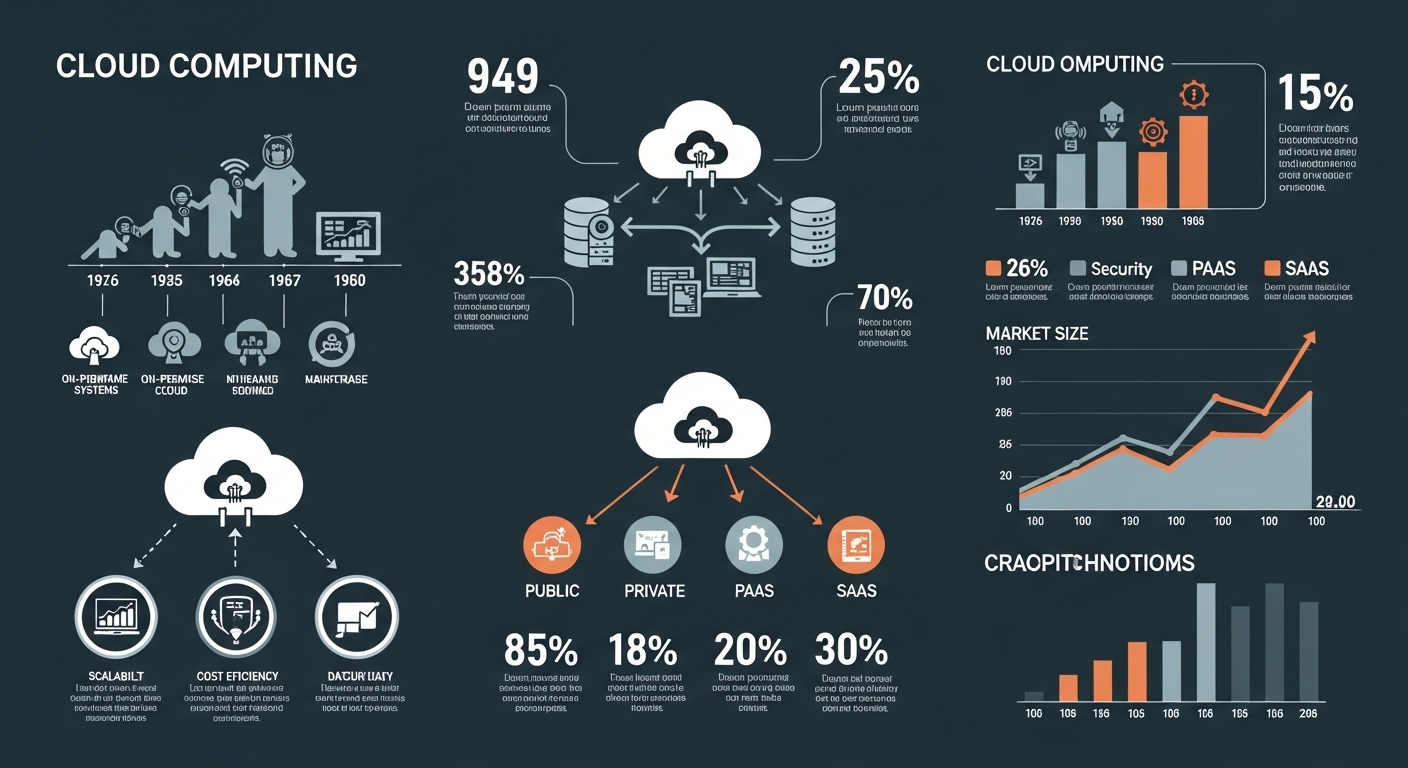So, everyone seems to be talking about the cloud these days. It’s like this invisible force driving digital transformation across industries. But when you mention “cloud,” what exactly are we talking about? It’s funny, but for something so non-physical, it holds immense physical power. From storage solutions to processing capabilities, the cloud has reshaped everything we know about computing. It’s not just a buzzword; it’s a fundamental shift in how businesses, large and small, operate today.
What is Cloud Computing Anyway?
Let’s dig into this a little. Cloud computing is basically using the internet to access services, software, and storage instead of relying solely on your local hardware. The capability to work from anywhere with internet access? Yeah, that’s thanks to the cloud. According to Wikipedia, cloud computing involves delivering hosted services over the internet. You know, like when you stream a movie on Netflix or store files on Google Drive. It’s all happening in the cloud.
Cloud Services: A Quick Rundown
Cloud services can be broken down into several categories. Here’s a quick look:
| Service Type | Description |
|---|---|
| Infrastructure as a Service (IaaS) | Offers virtualized computing resources over the internet. |
| Platform as a Service (PaaS) | Provides a platform allowing customers to develop, run, and manage applications. |
| Software as a Service (SaaS) | Delivers software over the internet, typically on a subscription basis. |
Why Businesses Love the Cloud
There are a bunch of reasons why businesses are leaping into the cloud. Scalability, for one. You can start small and grow as needed without significant up-front costs. Then there’s flexibility. During the pandemic, remote work became the norm, and cloud services were essential in making that transition smooth. Plus, cost efficiency plays a big role, as companies only pay for what they use, cutting down on unnecessary expenses.
Security Concerns in the Cloud
Security. It’s a biggie. Even though cloud providers invest heavily in securing their platforms, users need to do their part too. Managing permissions, encrypting data, and regular audits help in maintaining a secure environment. But let’s not forget the less obvious threats like compromised credentials or misconfigured storage.
Data Privacy and Compliance
Data privacy is another layer to consider. With regulations like GDPR in place, businesses must ensure they comply with data protection laws when using cloud services. This means knowing where your data is stored and ensuring it’s handled according to the relevant legal frameworks.
The Future of Cloud Computing
Now, what’s next for cloud computing? According to a Forbes article, there are several trends to watch. Hybrid cloud solutions are gaining traction, allowing businesses to benefit from both public and private cloud environments. Edge computing is set to enhance speed and efficiency by processing data closer to where it’s generated. AI and machine learning services hosted in the cloud are also poised to transform industries by offering advanced analytics and automation capabilities.
Impact on Mobile Technology
Cloud computing is intricately linked with the evolution of mobile technology. Mobile apps increasingly rely on cloud backends for things like data storage and processing power. This integration ensures that even the smallest of devices can perform complex tasks without being burdened with heavy processing. Interested in how mobile tech is evolving alongside the cloud? Check out some insights here.
Challenges Ahead
Despite all these advancements, there are challenges. Network latency can still be an issue, especially where high-speed connections aren’t a given. Then there’s the risk of vendor lock-in, where switching providers becomes complex and costly. And let’s not overlook the environmental impact of massive data centers powering the cloud. Sustainability is becoming an essential consideration for technology firms.
Cloud in Everyday Life
We sometimes forget how much the cloud is part of daily life. Streaming your favorite series, backing up photos, or even playing video games online—all thanks to cloud infrastructure. It’s woven into education, with digital classrooms and learning platforms that provide an interactive experience for students worldwide. Healthcare, too, has transformed with telemedicine and cloud-based health records, improving patient care and accessibility.
Cloud’s Role in Innovation
Innovation thrives in the cloud. It has provided a platform for startups to test ideas without hefty initial investments. Developers can deploy applications rapidly, iterate based on feedback, and scale efficiently. It has democratized technology development, making tools and resources available to a wider audience.
FAQs about Cloud Computing
- What’s the difference between public and private cloud? Public cloud services are shared across multiple clients, while private cloud services are dedicated to a single organization.
- Is my data safe in the cloud? Generally, yes, but it’s crucial to choose reputable providers and implement security best practices.
- How does cloud computing save costs? It reduces the need for physical hardware and allows pay-as-you-go models, meaning you only pay for what you use.
- Can I run legacy applications in the cloud? Some legacy applications can be migrated, but they may require modification to function optimally in a cloud environment.
- How do I choose the right cloud service provider? Consider factors like security measures, compliance certifications, service level agreements, and customer support when selecting a provider.
So, there you have it. Cloud computing is vast and ever-evolving, with a significant impact on various aspects of our lives and industries. It’s not just another tech trend but a fundamental change in how we think about and use technology. Keep an eye on developments, because the cloud isn’t going anywhere—it’s only getting bigger and, quite possibly, more complex.


